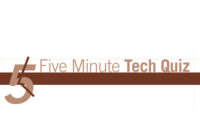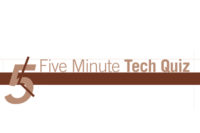Questions
1. Central station operators are permitted to verify residential fire alarm signals prior to dispatching if verification can be performed within _____ seconds. |
| a. 30 |
| b. 60 |
| c. 90 |
| 2. According to NFPA 72, a “Central Station Service” system may be approved by any of the following except |
| a. the AHJ |
| b. UL or ETL |
| c. FM, UL or ETL |
| d. FM |
| 3. UL listed burglar alarm system installations with line security require |
| a. a service agreement and annual inspections. |
| b. two phone lines. |
| c. two independent means of transmission. |
| d. do not require monitoring. |
| 4. VoIP consists of two major categories: |
| a. Dedicated and non-dedicated |
| b. Facilities based and non-facilities based |
| c. Static IP and DHCP |
| d. Digital and analog |
| 5. The two data protocols that IP communicators use are |
| a. UDP and TCP |
| b. ULC and GSM |
| c. GSM and GPRS |
| d. DACR and DACT |
| 6. All of the following affect network bandwidth except the |
| a. cabling |
| b. backbone |
| c. file size |
| d. router |
| 7. New advances in central station monitoring allow a single IP receiver to handle multiple manufacturers’ transmitting equipment. |
| a. True |
| b. False |
| 8. With the cord unplugged a technician should hear dial tone on the RJ31x jack at terminals |
| a. 1 and 2, and 7 and 8 |
| b. 1 and 2, and 3 and 4 |
| c. 2 and 4, and 6 and 8 |
| d. 4 and 5, and 1 and 8 |
| 9. Alarm companies are permitted to remotely program a fire alarm system |
| a. never. |
| b. only to do minor (less than 10 percent) changes. |
| c. only when a technician is on site. |
| d. whenever the AHJ requires it. |
| 10. Reprogramming of a fire alarm system that does not substantially change the configuration of the system requires testing at least _____ percent of the system. |
| a. 5 |
| b. 10 |
| c. 25 |
| d. 100 |
| 11. AMPS refers to |
| a. the amount of power carried on a wire. |
| b. the discontinued cellular communication service. |
| c. Alarm Management Police System. |
| d. none of the above. |
| 12. All of the following are permissible methods of connecting a fire alarm system except |
| a. IP |
| b. POTS |
| c. PBX |
| d. MESH |
| 13. UL Certified or FM Placarded systems must be monitored at a |
| a. remote monitoring station. |
| b. supervising station. |
| c. central station. |
| d. fire department. |
| 14. According to NFPA 72, which of the following are required for a central station service system? |
| a. Monitoring, retransmission, runner service, testing and monitoring, record-keeping, two phone lines, 24-hour test signals |
| b. Installation of transmitters, monitoring, runner service, testing and monitoring, record-keeping |
| c. Monitoring, retransmission, testing and monitoring, record-keeping, 24-hour test signals |
| d. Installation of transmitters, monitoring, retransmission, runner service, testing and monitoring, record-keeping |
| 15. A technician is required to respond to a monitored central station service system |
| a. within two hours of a fire alarm even if it resets. |
| b. within two hours of a fire alarm only if it needs resetting. |
| c. within two hours for a fire alarm or trouble signal and four hours for a supervisory signal. |
| d. only when requested by the fire department; they know when the system needs a technician. |
Answers |
| 1. c |
| 2. a |
| 3. a UL 681, Section 24 |
| 4. b |
| 5. a |
| 6. d |
| 7. b Due to a lack of standards, each manufacturer is presently transmitting the data in its own proprietary format. |
| 8. d Verifies wiring of the protection jack and assumes standard POTS line. |
| 9. c |
|
10. b 100 percent testing of those devices affected by the change is required, but only 10 percent of the balance of the system is required to be tested. NFPA 72, 2010 Edition, Section 14.4.1.2.1.4 |
| 11. b While the acronym for AMPS stands for Advanced Mobile Phone System, changes in tech-nology have made it obsolete. |
| 12. c |
| 13. c The term “Central Station” is defined in NFPA 72 and has specific requirements. Not every monitoring station is a Central Station. |
| 14. d NFPA 72, 2010 Edition, Section 26.3.2 |
| 15. b |
Taking up the Torch
This month marks the return of SDM’s 5-Minute Tech Quiz following the death last year of author Ron Nelson. I am profoundly humbled at the opportunity to be able to continue this column from Ron, a long-time friend and mentor, although I could never replace him. For 16 years Ron authored the 5-Minute Tech Quiz with the hope of engaging his audience in sometimes simple yet overlooked issues one might come upon every day. Regardless of who called him, colleague or competitor, Ron would offer advice and assistance. And since Ron worked for a central station, my first column is dedicated to him and to monitoring. Here’s to you Ron. I hope to make you proud! Roy Pollack


